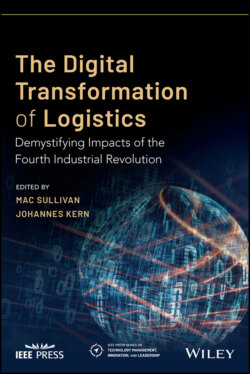Читать книгу The Digital Transformation of Logistics - Группа авторов - Страница 87
Rote, Repetitive Tasks Ripe for Automation
ОглавлениеIf you are still on board to continue examining a task that you would prefer not to do yourself or have your local staff to handle, there are still a few more steps to identify whether it is the right candidate for RPA. Traditional process automation in the BPM sense where systems are configured to interact with each other requires many of the same cases of a task to be done in a short period to justify the costly investment. RPA, on the other hand, offers a cheaper and quicker implementation to target tasks that do have repetition, but a small amount of variation spread out over a longer time but still have enough scale to consider automation (van der Aalst et al. 2018). Insurance and credit card companies have utilized process automation as they had a large pool of claims and payments that were often being handled in very similar ways.
Jesuthasan and Boudreau (2018) explain that there are three characteristics to categorize the components of jobs to identify if they are suitable for automation. The first characteristic of the task is looking at whether it is repetitive or variable. Repetitive tasks are those that are done the same way every time, such as credit application, which pulls a report using the same customer data on each application, as opposed to a variable task, like human resource consultants whose work will vary greatly for each customer. The second characteristic is whether a task is independent or interactive. Independent work can be done by one person without interacting with others like generating accounting statements as opposed to collaborative work that requires communication skills like would be needed by an employee working for a call center. The last characteristic of a task ripe for automation is whether it is physical or mental work. This distinction is somewhat obvious: physical work requires dexterity and strength, whereas mental work requires cognitive ability. The tasks that are best fit for RPA and other forms of automation are those that are repetitive, independent, and mental.
Fung (2014) defines his criteria for potential RPA tasks as follows: (i) having low cognitive needs in terms of subjectivity or interpretation needs, (ii) being large in volume, (iii) needing to move between different applications, (iv) having small amounts of variability and exceptions, and (v) a task that has demonstrated human entry errors that have caused issues in the past. Since most RPA bots lack the cognitive capabilities of AI and machine learning (ML) algorithms, it won't be able to handle tasks with a large amount of variance, and due to it being software, it won't be able to complete any physical work (Jesuthsan and Boudreau 2019). An RPA bot is programmed to perform actions on the computer in the same way that a human would by navigating interfaces through clicking and typing. The bot is not smart in the sense that it knows what information it needs to pull or what button it needs to click; it simply knows where the button and information are and when the interaction should happen. Since the bot functions using location data to navigate elements of the interface, any changes to the interface or the appearance of the page will cripple the bot's functionality.
